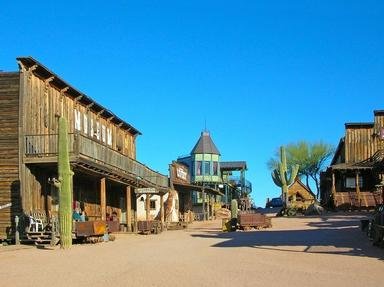
The Wild, Wild West Trivia Quiz
Match the historic towns from America's Wild West period with the state in which they are located. Some states had more than one wild town and some town names are found in more than one state.
A matching quiz
by CmdrK.
Estimated time: 4 mins.
- Home
- »
- Quizzes
- »
- History Trivia
- »
- U.S. History
- »
- Old West
